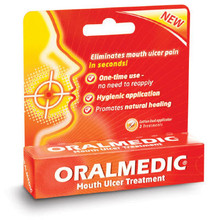

- ULCER MEDICATION FULL
- ULCER MEDICATION SERIES
A small tissue sample (biopsy) can be taken. Your health care provider can see the inside of these organs. Then it goes into your esophagus, stomach, and duodenum. The tube is put into your mouth and throat. It uses a thin lighted tube called an endoscope. This test looks at the lining of your esophagus, stomach, and duodenum. Upper endoscopy or EGD (esophagogastroduodenoscopy).Barium coats the organs so that they can be seen on an X-ray. You will swallow a metallic fluid called barium. It checks your food pipe (esophagus), stomach, and the first part of the small intestine (the duodenum). This test looks at the organs of the top part of your digestive system.
ULCER MEDICATION SERIES
Upper GI (gastrointestinal) series or barium swallow.Imaging tests used to diagnose ulcers include: Your healthcare provider will look at your past health and give you a physical exam. Always see your healthcare provider to be sure. Peptic ulcer symptoms may look like other health problems.
ULCER MEDICATION FULL
Feeling full after eating a small amount of food.It can last from a few minutes to a few hours. This pain often occurs around meal times and may wake you up at night.

The most common ulcer symptom is a dull or burning pain in your belly between your breastbone and your belly button (navel). In some cases ulcers don’t cause any symptoms. Over time they can damage the mucus that protects the lining of your stomach.Įach person’s symptoms may vary. These are over-the-counter pain and fever medicines such as aspirin, ibuprofen, and naproxen.
NSAIDs (nonsteroidal anti-inflammatory drugs). Stomach acid then gets through to the lining. This bacteria hurts the mucus that protects the lining of your stomach and the first part of your small intestine (the duodenum). Most ulcers are caused by an infection from a bacteria or germ called H. These fluids burn the linings of your organs. Today we know that stomach acids and other digestive juices help create ulcers. In the past, experts thought lifestyle factors such as stress and diet caused ulcers. If the ulcer is in your duodenum, it is called a duodenal ulcer. If the ulcer is in your stomach, it is called a gastric ulcer. Your GP will let you know about these if your child needs them.A peptic ulcer is a sore on the lining of your stomach or the first part of your small intestine (duodenum). There are specific treatments for mouth infections caused by thrush and the cold sore virus. You can also try warm salt water rinses if your child is old enough to rinse or gargle with liquids.Įncourage your child to have enough fluids by offering small, frequent sips of water. You can buy these mouth gels over the counter from pharmacies. If your child is in pain, you can try applying an anaesthetic mouth gel to the area. Simple mouth ulcers usually don’t need treatment and will clear up within a week. This is because mouth ulcers can sometimes be caused by coeliac disease or inflammatory bowel disease. You should see your GP urgently if your child develops severe mouth ulcers with symptoms of general illness like: If you think your child might have ulcers related to a mouth infection, it’s a good idea to see your GP. Does your child need to see a doctor about mouth ulcers? If an infection is causing the ulcers, your child might also have a fever. Sometimes your child might even refuse food until the ulcers start to heal. These sores can be painful, especially when your child eats salty or spicy foods. Mouth ulcers usually look like round, white sores on the inner lining of your child’s mouth, or on the surface of your child’s gums or tongue. Sometimes ulcers keep coming back without any obvious cause. diseases like coeliac disease or inflammatory bowel disease. injuries like biting, burns or rubbing from braces. viral infections like cold sores or hand, foot and mouth disease. Mouth ulcers are little sores that come up inside the mouth, on the tongue or on the gums.






 0 kommentar(er)
0 kommentar(er)
